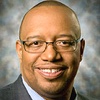Home » Jazz Articles » Live Review » Real People, Real Music, Real New Orleans
Real People, Real Music, Real New Orleans
WWOZ is the only station in New Orleans that takes care of its own
—Eddie Bo
Today, nearly a quarter-century later, the Malibu is no more, but WWOZ still introduces generations to the native sounds of Louisiana and America. And as far as the signal goes, you can hear it anywhere around town and through the magic of the World Wide Web, all over the world. This year marks a new beginning for WWOZ, as the station's capital fund-raising campaign shifts into high gear. The goal: a new $1.8 million recording studio and office in New Orleans' Louis Armstrong Park. But as a New Year begins and the old one ends, I can't help but think about the old days and what this station means to the musical culture of New Orleans.
On WWOZ I first heard the sounds of Professor Longhair and James Booker - two New Orleans piano masters that helped shape not only New Orleans music, but also the rock and roll of today. With all the radio stations broadcasting at the time, the music of 'Fess and Booker could only be found at 90.7 on your FM dial.
In New Orleans, birthplace of King Oliver, Louis Armstrong, Jelly Roll Morton and Sidney Bechet, you could still hear the sounds of traditional jazz in clubs in the French Quarter. Pete Fountain and Al Hirt were still playing regularly and Preservation Hall did just that - preserved the sounds of New Orleans' traditional music. However, the airwaves were not kind to local musicians. Stations were programmed and packaged and if your music did not fit the formula, you were out of luck. WWOZ opened its studio doors, and encouraged locals to bring their tapes and promised them the chance to be heard in their own hometown. Many of them obliged and that tradition continues to this day. As David Freedman, manager of WWOZ likes to say about the station, "It's real people, real music, real New Orleans."
It was on WWOZ that I discovered modern jazz. The station provided a steady diet of this intricate and complex music and in many ways, became my mobile classroom. The volunteers, many of whom brought music from their own collections, seemed to understand that listening to modern jazz could only satisfy ones curiosity about modern jazz. But at seventeen, I still could not make the club scene. So, WWOZ was it. I heard Ellington, Rollins, Coltrane and Davis, to name a few. But more importantly, the volunteers talked about the music and I learned from their lectures. After hearing something that caught my ear, I would jump into the Malibu and pay a visit to the Metronome, a local record store that got more than its share of my tiny disposable income. These pieces of vinyl (yes, pre-compact discs) provide hours of listening pleasure to this day.
When I left New Orleans, I moved to a number of different cities and always looked to find the station dedicated to bearing the torch for local musicians. It was typical to find a college station that played some jazz, but few that supported the local music scene to the depths that WWOZ has. WWOZ is unique in that it has such a rich musical heritage to draw from and that fuels the work that continues there today. Eddie Bo, another local musical treasure has been quoted as saying that, "WWOZ is the only station in New Orleans that takes care of its own." Few could argue this sentiment.
For a chance to hear some New Orleans music and to get a taste of its unique culture, check WWOZ out at www.wwoz.org . The new studios will be housed in the New Orleans Jazz National Historical Park now being developed in Armstrong Park by the National Park Service. Visitors will be able to experience broadcast studio activities, including live music performances, in addition to seeing a showcase for the city's jazz heritage.
Until next time, see you 'Round About New Orleans.
< Previous
E=Mas Cabeza2
Next >
Take It from the Top
Comments
Tags
For the Love of Jazz
 All About Jazz has been a pillar of jazz since 1995, championing it as an art form and, more importantly, supporting the musicians who create it. Our enduring commitment has made "AAJ" one of the most culturally important websites of its kind, read by hundreds of thousands of fans, musicians and industry figures every month.
All About Jazz has been a pillar of jazz since 1995, championing it as an art form and, more importantly, supporting the musicians who create it. Our enduring commitment has made "AAJ" one of the most culturally important websites of its kind, read by hundreds of thousands of fans, musicians and industry figures every month.





















